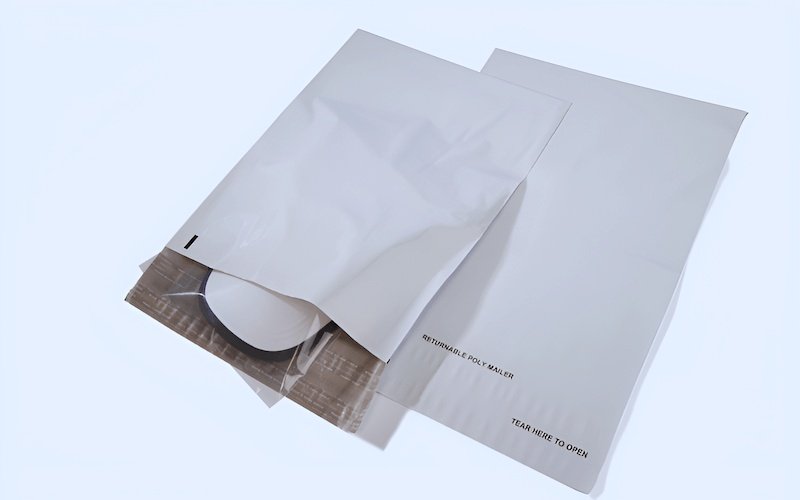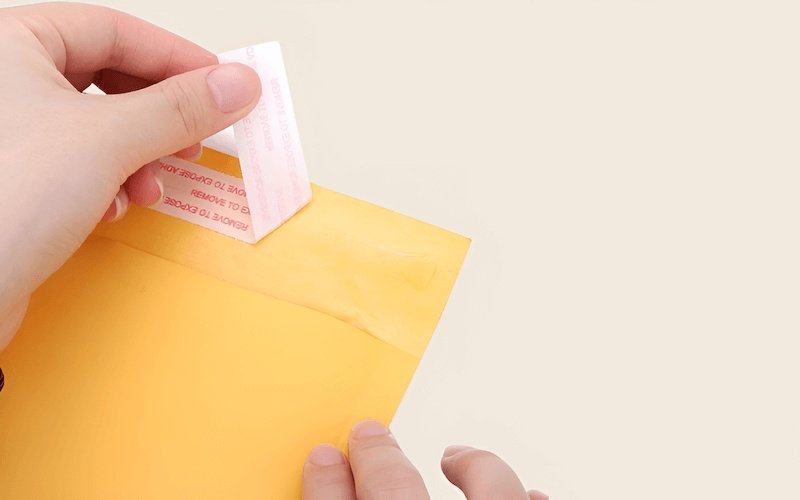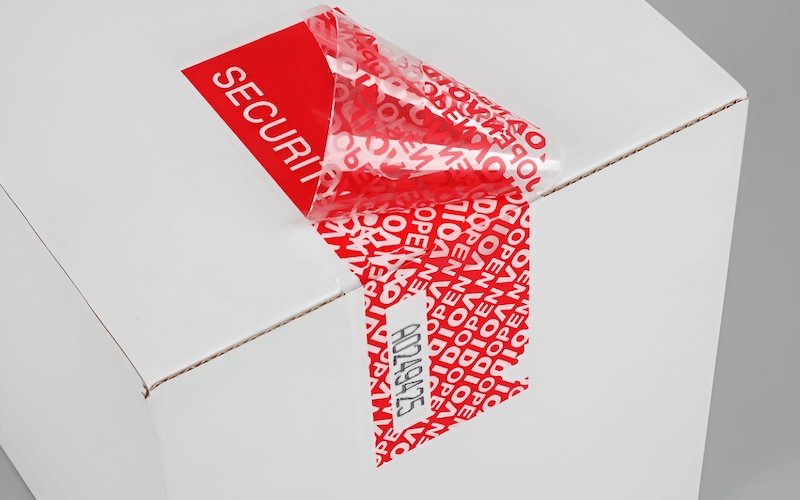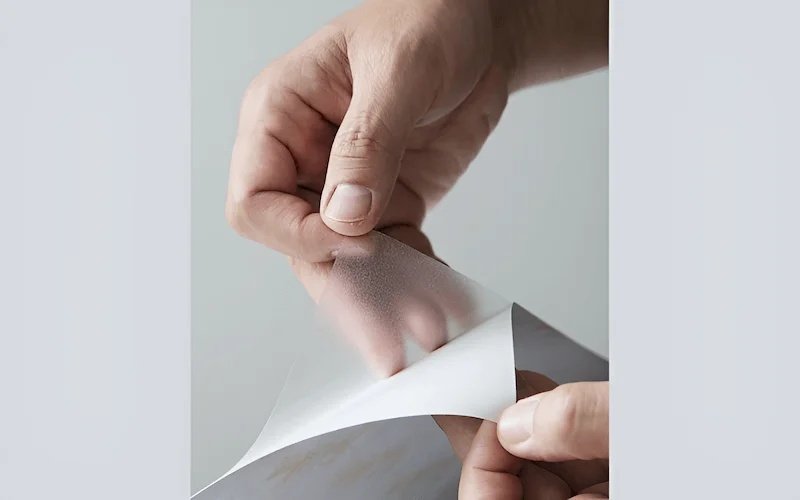Adhesive Closure: Types and Benefits for Clothing Mailers
When shipping apparel, the packaging is almost as important as the product inside. Clothing mailers rely heavily on their closure system for security, efficiency, and presentation. Adhesive closures, the familiar peel-and-seal strips, are a dominant choice.
This article explores the different types of adhesive closures used on clothing mailers and examines the key benefits they offer businesses, from enhanced security to streamlined packing processes.
1. Decoding the Adhesive Closure: Beyond Just a Sticky Strip
1.1 Defining Adhesive Closures in E-commerce Packaging
In the realm of e-commerce packaging, particularly for items like poly mailers, bubble mailers, and shipping bags commonly used by clothing retailers, an adhesive closure refers to a built-in sealing mechanism. Essentially, it’s a strip of pre-applied glue on the flap of the packaging, covered by a protective liner.
This integrated system eliminates the need for separate packing tape or liquid adhesives to seal the package securely. You’ll often hear this feature referred to simply as a “self-seal” closure, highlighting its convenience. This approach streamlines the packing process significantly for businesses shipping apparel and other goods.

1.2 How Peel-and-Seal Mailer Closures Work
The mechanism behind peel-and-seal mailer closures is remarkably straightforward. The process involves peeling away a protective strip, known as the release liner, which covers the adhesive strip pre-applied to the mailer’s flap. Once the release liner is removed, the sticky adhesive is exposed.
Folding the flap down and applying pressure along the strip creates the seal. Most adhesives used in this type of packaging are pressure-sensitive adhesives, meaning they form a bond when pressure is applied. The core components are simply the adhesive agent itself and the release liner covering it until the moment of application. This application method is designed for speed and ease of use.
1.3 Why the Right Closure System Matters for Shipping Apparel
Selecting the appropriate closure system for your clothing packaging extends beyond merely sealing a bag. This choice directly impacts several critical aspects of your operation. Firstly, package integrity during transit is paramount; a reliable seal protects garments from the elements and potential tampering.
Secondly, the closure contributes significantly to the customer experience – a neat, easy-to-open seal feels more professional than struggling with excessive tape. Thirdly, operational efficiency hinges on quick and simple packing steps, which a good closure facilitates.
Lastly, for businesses managing returns, certain closure types can simplify the process for both the customer and the retailer. Therefore, the seemingly small detail of the closure system can influence package security, customer perception, packing speed, and logistical ease for clothing retailers.
2. Streamlining Operations: Key Benefits of Adhesive Closure Mailers
Mailers with adhesive closures offer distinct advantages that can significantly streamline packing and shipping operations for clothing businesses.
2.1 Boosting Packing Speed & Efficiency
One of the most immediate benefits of peel-and-seal closures is the substantial increase in packaging efficiency. Compared to manually applying tape with a dispenser or using liquid glue, the peel-and-seal method drastically reduces the time needed to prepare each package.
Consider these points:
- Time savings: Shaving even a few seconds off sealing each package adds up to significant labor savings over hundreds or thousands of shipments.
- Simplified process: The action is simple – peel, fold, press. This reduces the number of steps and potential bottlenecks in the packing workflow.
- Reduced supplies: There’s no need to purchase, store, or manage separate rolls of tape, tape guns, or glue, simplifying inventory and reducing clutter in the packing area.
This focus on speed and logistics directly translates to improved cost-effectiveness.
2.2 Enhancing Shipment Security
A robust adhesive closure provides a reliable security seal for apparel shipments. The strong bond created by quality adhesives acts as a deterrent against casual tampering during transit. Unlike packing tape, which can sometimes leave gaps or be peeled back relatively easily, a continuous adhesive strip applied correctly creates a more uniform and secure bond along the opening.
For heightened protection, options like permanent seals are available; these are designed to show visible damage to the mailer if opening is attempted, offering a higher level of package integrity and acting as a tamper-evident feature. Ensuring adhesive strength is suitable for the shipping journey helps maintain security.
2.3 Optimizing Costs: Material Savings and Simplicity
Adhesive closure mailers contribute directly to cost-effectiveness in several ways. The most obvious saving comes from eliminating the need to purchase supplementary packaging supplies like packing tape, staples, or glue. This not only reduces material costs but also simplifies procurement and inventory management.
Furthermore, the increased packing speed, as mentioned earlier, translates into reduced labor time per package. While the mailer itself might have a slightly different cost profile than a plain bag, the overall packaging solution often proves more economical when factoring in the savings on both materials and labor. This makes adhesive closures an attractive option for optimizing shipping cost.
2.4 Delivering a Professional Unboxing Experience
The presentation of a package upon arrival significantly influences a customer’s perception of the brand. A poly mailer sealed neatly with its integrated adhesive closure presents a clean, streamlined, and professional appearance.
This contrasts sharply with packages closed haphazardly with excessive or poorly applied tape, which can look unprofessional or careless. The unboxing experience is often the customer’s first physical interaction with the brand after an online purchase. A well-sealed package enhances this experience, reinforcing positive branding and contributing to overall customer satisfaction.

3. Types of Adhesive Closures: Choosing Your Seal Strategy
Understanding the different types of adhesive closures available allows businesses to select the option that best aligns with their specific product, security requirements, and customer service strategy.
3.1 Permanent Adhesive Closures: Prioritizing Security
Permanent adhesive closures are engineered for a single, highly secure seal. Once sealed, attempting to open the mailer typically results in visible tearing or damage to the packaging material itself. This inherent feature makes them tamper-evident to a degree.
Characteristics: Employ high tack (strong initial stickiness) adhesives for an aggressive bond.
Ideal Use Cases:
- Shipping high-value garments where security is paramount.
- Discouraging fraudulent returns or claims of non-receipt.
- Situations where resealing by the customer is unnecessary or undesirable.
3.2 Resealable Adhesive Closures: Balancing Convenience and Returns
Resealable adhesive closures are designed to allow the package to be opened and closed multiple times, although the number of effective reseals is usually limited.
Characteristics: Typically utilize lower or medium tack adhesives that allow the flap to be lifted and re-adhered without destroying the mailer.
Benefits & Use Cases:
- Enhances customer convenience, allowing for easy opening and inspection (e.g., trying on clothes).
- Facilitates easier returns using the original packaging, improving the returnable packaging experience.
- Suitable for lower-risk items or when prioritizing a smooth customer journey, including easy opening.
These closures offer flexibility but provide slightly less brute-force security compared to permanent options, striking a balance focused on customer convenience.

3.3 Understanding Tamper-Evident Features
Tamper-evident features provide clear, visual indication if a package has been opened or interfered with after its initial sealing. This goes beyond simply being difficult to open (tamper-resistant). Examples include:
- Specialized Adhesives: Formulations that leave behind residue or patterns (like the word “VOID”) on the mailer surface if the seal is broken.
- Mailer Construction: Designs that inherently tear or deform in specific ways upon opening.
- Printed Patterns: Graphics on the seal area that are visibly disrupted if tampered with.
These security features can often be incorporated alongside permanent seals to offer an enhanced level of assurance against unauthorized access, creating a tamper proof seal system.

3.4 Dual Adhesive Strips: Simplifying the Returns Process
A particularly useful innovation for e-commerce, especially clothing retail, is the dual adhesive strip mailer. These mailers feature two separate adhesive strips on the flap:
- Strip 1: Used by the sender to seal the package for the initial shipment.
- Strip 2: Concealed initially (often under a perforated tear-off section), this second strip is available for the customer to use if they need to return the item.
This design makes the returns process significantly more convenient for the customer (no need to find tape) and encourages the use of the original, appropriately sized packaging, streamlining e-commerce returns and enhancing the overall returnable packaging experience.
3.5 Key Properties: Adhesive Strength (Tack) and Strip Width
Two fundamental properties influence the performance of an adhesive closure:
- Adhesive Strength (Tack): This refers to the initial stickiness and ultimate bonding power of the adhesive. It’s often categorized as high, medium, or low tack. High tack adhesives (ideal for permanent seals) create very strong bonds quickly, while medium or low tack adhesives (suitable for resealable seals) allow for repositioning or resealing.
- Adhesive Strip Width: Generally, a wider adhesive strip provides a larger surface area for bonding. This can contribute to a stronger, more reliable seal strength, especially important for heavier items or shipments undergoing rough handling. The width often correlates with the type of seal – permanent seals might feature wider strips for maximum security. Understanding these properties helps in selecting a closure with appropriate bonding characteristics.
4. Selecting the Ideal Adhesive Closure for Your Clothing Line
Choosing the right adhesive closure isn’t just about sticking a flap down; it’s a strategic decision that impacts various facets of your business. Applying the knowledge of different closure types to your specific context is key.
4.1 Matching the Seal to Your Product & Shipping Needs
Consider the specific requirements dictated by what you sell and how you ship. Ask yourself:
- Product Value: Are you shipping high-end designer pieces or more budget-friendly basics? Higher value might warrant a more secure, permanent seal.
- Likelihood of Returns: Does your clothing type (e.g., swimwear, formal wear) have a high return rate? A resealable or dual-strip mailer might improve customer experience.
- Shipping Journey: Will packages travel long distances or face potentially rough handling? A stronger seal might be necessary for package integrity.
- Customer Expectations: Are your customers expecting premium, easy-to-open packaging, or is basic functionality sufficient? Thinking through these decision factors related to your specific clothing type and shipping needs will guide your packaging selection.
4.2 Security vs. Convenience: Finding the Right Balance
There’s often a direct trade-off between maximum security and maximum convenience, particularly regarding returns.
- Permanent Seals: Offer the highest level of security against tampering and environmental factors but make returns slightly more cumbersome for the customer (they’ll need new packaging or tape).
- Resealable/Dual-Strip Seals: Prioritize customer convenience for opening and returns but might offer marginally less resistance to determined tampering compared to a fully destructive permanent seal.
Your returns policy and risk assessment for factors like product value or return fraud should inform where you strike this balance between security and customer convenience for your specific business model.
4.3 Mailer Material Matters: Ensuring Strong Adhesion
The effectiveness of the adhesive closure also depends on its compatibility with the mailer material itself, which is typically a polyethylene film (often a co-extruded film for strength and opacity). Reputable mailer suppliers use adhesives specifically formulated for strong adhesion to these plastic surfaces. However, it’s worth being aware that factors like:
- Surface Treatment: Proper treatment of the film during manufacturing ensures the adhesive bonds correctly.
- Environmental Conditions: Extreme temperatures (hot or cold) during shipping or storage can potentially affect adhesive performance.
Ensure the chosen mailer and its adhesive system are suitable for the intended contents and expected shipping conditions. While quality suppliers manage material compatibility, confirming suitability provides an extra layer of assurance.
5. Expert Tips for Flawless Sealing Every Time
Consistently achieving a reliable seal involves more than just peeling and pressing. Following best practices ensures the adhesive closure performs optimally.
5.1 Preparation is Key: Clean, Dry Surfaces
Before sealing, ensure the area on the mailer flap and the corresponding surface where the adhesive will bond are clean and completely dry. Dust, dirt, moisture, oils from hands, or other contaminants can significantly interfere with the adhesive’s ability to form a strong bond. A quick wipe, if necessary, can make a difference. This basic preparation is a crucial step in the application method.
5.2 Technique: Proper Alignment and Even Pressure
Proper sealing technique maximizes the adhesive’s effectiveness. First, carefully align the flap before making contact, ensuring the adhesive strip will land squarely on the intended sealing area. Once aligned, apply firm, even pressure along the entire length of the adhesive strip.
Running a hand or a flat object firmly across the seal ensures full contact and helps activate the pressure-sensitive adhesive uniformly. Avoid just pressing the center; ensure the edges are also securely bonded through proper pressure application and sealing technique.
5.3 Storing Your Adhesive Mailers Correctly
How you store your unused mailers impacts the adhesive performance over time. Keep them in a cool, dry place, away from direct sunlight and sources of extreme heat or cold. Environmental factors like high humidity or fluctuating temperatures can degrade the adhesive’s effectiveness and potentially shorten its shelf-life.
While less critical for basic poly mailer adhesives than for some specialized tapes, following good storage practices helps maintain optimal adhesive performance.
5.4 Troubleshooting Common Issues
Even with quality mailers, occasional issues can arise. Here are common examples and solutions:
- Weak Seal in Cold Temperatures: Some adhesives become less tacky in the cold. If sealing in a cold environment, apply extra pressure and hold for slightly longer. If possible, allow mailers to acclimate to room temperature before sealing.
- Release Liner Tearing: If the protective liner tears instead of peeling cleanly, try peeling more slowly from a corner, applying gentle, steady tension. Ensure your hands are dry to get a good grip.
Addressing these minor troubleshooting points can prevent frustrating delays in the packing process and ensure reliable adhesive performance.

6. Related Questions (FAQs)
Addressing common queries about adhesive closure mailers provides further clarity for users.
6.1 Can adhesive closure mailers be recycled?
The recyclability of poly mailers primarily depends on the plastic material used (commonly LDPE #4) and the capabilities of local recycling facilities. Many poly mailers are recyclable where plastic film recycling programs exist (often collection points at retail stores).
The adhesive strip itself is generally considered a contaminant, but because it represents a very small portion of the total package weight, many facilities accept mailers with the strip intact. It’s always best practice to check local recycling guidelines. Look for mailers made with recycled content or explicitly labeled for easier recycling to support sustainable packaging efforts.
6.2 Are adhesive closures waterproof?
Poly mailers made from polyethylene are inherently water-resistant, offering good protection against rain, snow, and splashes during transit. When an adhesive closure is properly sealed, it creates a continuous barrier that is also water-resistant along that edge, further protecting the contents.
However, neither the mailer material nor the standard adhesive seal is typically designed to be fully waterproof if submerged in water for extended periods. Therefore, while highly resistant to weather, consider additional internal protection if true waterproofing is essential. Seal integrity is key for water resistance.
6.3 What’s the difference between hot melt and acrylic adhesive on mailers?
The two most common types of pressure-sensitive adhesives used on mailers are hot melt and acrylic, each with distinct adhesive properties. Hot melt adhesives generally offer excellent initial tack (they grab quickly) and are often more cost-effective, making them suitable for high-volume, general-purpose shipping. They perform well in moderate temperature ranges.
Acrylic adhesives, conversely, tend to offer better performance across a wider temperature range, particularly in cold conditions where hot melts can sometimes become brittle. They also typically have better resistance to UV light and aging, maintaining their bond strength over longer periods.
Acrylics are sometimes preferred for applications requiring higher security, potential outdoor exposure, or enhanced tamper-evidence, though they might come at a slightly higher cost. The choice depends on factors like shipping conditions, required seal strength, and budget.
Read more:
Incorporating mailers with adhesive closures is a fundamental aspect of efficient, secure, and professional packaging for any clothing business involved in shipping. As explored, these integrated seals offer significant benefits in speed, cost-effectiveness, package security, and even branding through a cleaner unboxing experience.
The key takeaway is the importance of making an informed choice. Selecting the appropriate type of closure – whether a high-security permanent seal, a customer-friendly resealable option, or a convenient dual-strip design – depends directly on your specific product characteristics, return policies, and operational priorities.
By carefully considering factors like security needs versus customer convenience, and understanding the properties like adhesive strength, businesses can optimize their packaging solutions. Evaluating your current process and considering if a different adhesive closure strategy could lead to smarter shipping is a worthwhile exercise for enhancing both efficiency and customer satisfaction.


















